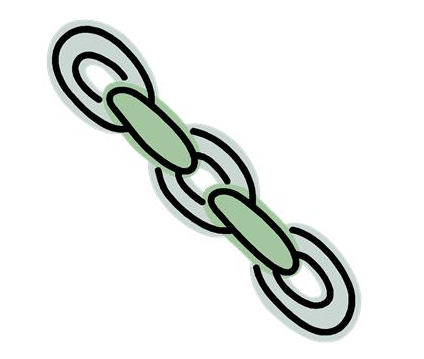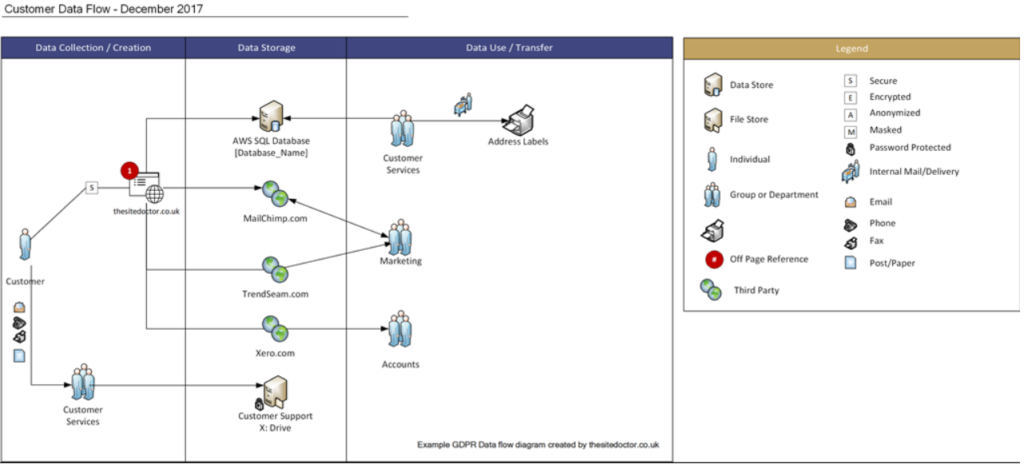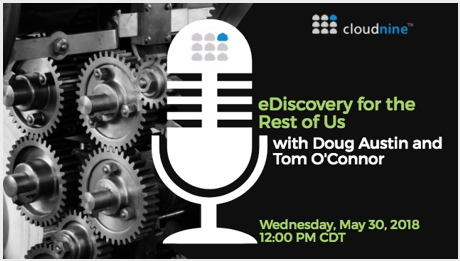Plaintiff is Able to Get Some Subpoenas for Personal Data Quashed, But Not All: eDiscovery Case Law
In Delgado v. Tarabochia, et al., No. C17-1822RSL (W.D. Wash. May 4, 2018), Washington District Judge Robert S. Lasnik granted in part and denied in part the plaintiff’s motion to quash subpoenas for personal phone records and bank records, finding that phone records before the plaintiff’s hand injury on the defendant’s fishing boat were “of vital importance to defendants’ theory of the case”, but that the need for pre-incident bank records was not proportional to the needs of the case and that, with regard to subpoenas of post-incident data, defendants were “fishing”.
I’ll pause a moment to let you enjoy the irony of that statement… :o)
Case Background
Anyway, the plaintiff injured his hand while on board the F/V JOYCE MARIE and sued the vessel and vessel owner(s) for Jones Act negligence and unseaworthiness, alleging that he lost his balance and his hand went through a plate glass window on the wheelhouse, causing severe injuries with continuing disabilities. However, another crew member on board at the time of the incident claimed that the plaintiff was using heroin in the days leading up to the incident and was in the midst of a heated argument with his girlfriend when he punched through the window. After the plaintiff left the vessel, defendants located a computer file supposedly created by the plaintiff, containing text messages, emails, and photographs dated October 2013 to July 2014 that seemed to reflect drug transactions and a volatile relationship, but the plaintiff (in his deposition) denied fighting with his girlfriend and denied punching through the wheelhouse window. Reporting that he had no feeling in three of his fingers and his thumb and was in constant, severe pain, the plaintiff claimed he was entitled to damages of $3 million, but the defendant had surveillance video that seemed to contradict the plaintiff’s testimony regarding the extent and severity of his injuries.
The defendants issued three subpoenas for phone records from January 2014 to the present, including all account information, call and text message logs, and roaming data. They also issued two subpoenas for bank records for the same period, seeking detailed summaries of credit and debit card transactions, withdrawals, and deposits. The plaintiff seeks to quash all five subpoenas as irrelevant and an unwarranted burden on his privacy interests.
Judge’s Ruling
With regards to the pre-incident phone records, Judge Lasnik indicated that “defendants have identified a specific need to confirm events and authenticate communications that are directly relevant to a determination of whether defendants’ negligence and/or the vessel’s unseaworthiness caused plaintiff’s injuries. To the extent these records mirror the electronic files found on the vessel’s computer and corroborate the other crewman’s statements, they are of vital importance to defendants’ theory of the case. While much will be disclosed that has nothing to do with this case, plaintiff’s privacy interests do not outweigh the need to obtain relevant information regarding the cause of plaintiff’s injuries in this case where plaintiff says he is entitled to damages of $3,000,000.”
With regards to the pre-incident bank records, Judge Lasnik stated that “defendants offer no reason to suspect that these records will authenticate or corroborate the electronic files plaintiff left behind. Production of plaintiff’s pre-incident finances, including every purchase and every deposit, is unlikely to result in admissible evidence (there is no reason to suspect that plaintiff used a credit card to purchase heroin or that defendants would be able to identify such transactions from a list of charges or withdrawals). Because of its minimal relevance and the outsized burdens it would impose on plaintiff’s privacy interests, discovery of the pre-incident bank records is not proportional to the needs of the case.”
As for the post-incident phone and bank records, Judge Lasnik stated that “defendants are fishing” and granted the plaintiff’s motion to quash the subpoena for these records because the “balance of the benefits and burdens of these post-incident discovery requests are not in defendants’ favor: they are not prompted by any specific need for information and are likely to drive discovery and generate disputes that are wholly collateral to the primary issues in this case.”
So, what do you think? Did the judge assess the relevancy and proportionality in this case correctly and were the defendants “fishing” for the post-incident records? Tee-hee! Please share any comments you might have or if you’d like to know more about a particular topic.

Case opinion link courtesy of eDiscovery Assistant.
Sponsor: This blog is sponsored by CloudNine, which is a data and legal discovery technology company with proven expertise in simplifying and automating the discovery of data for audits, investigations, and litigation. Used by legal and business customers worldwide including more than 50 of the top 250 Am Law firms and many of the world’s leading corporations, CloudNine’s eDiscovery automation software and services help customers gain insight and intelligence on electronic data.
Disclaimer: The views represented herein are exclusively the views of the author, and do not necessarily represent the views held by CloudNine. eDiscovery Daily is made available by CloudNine solely for educational purposes to provide general information about general eDiscovery principles and not to provide specific legal advice applicable to any particular circumstance. eDiscovery Daily should not be used as a substitute for competent legal advice from a lawyer you have retained and who has agreed to represent you.










